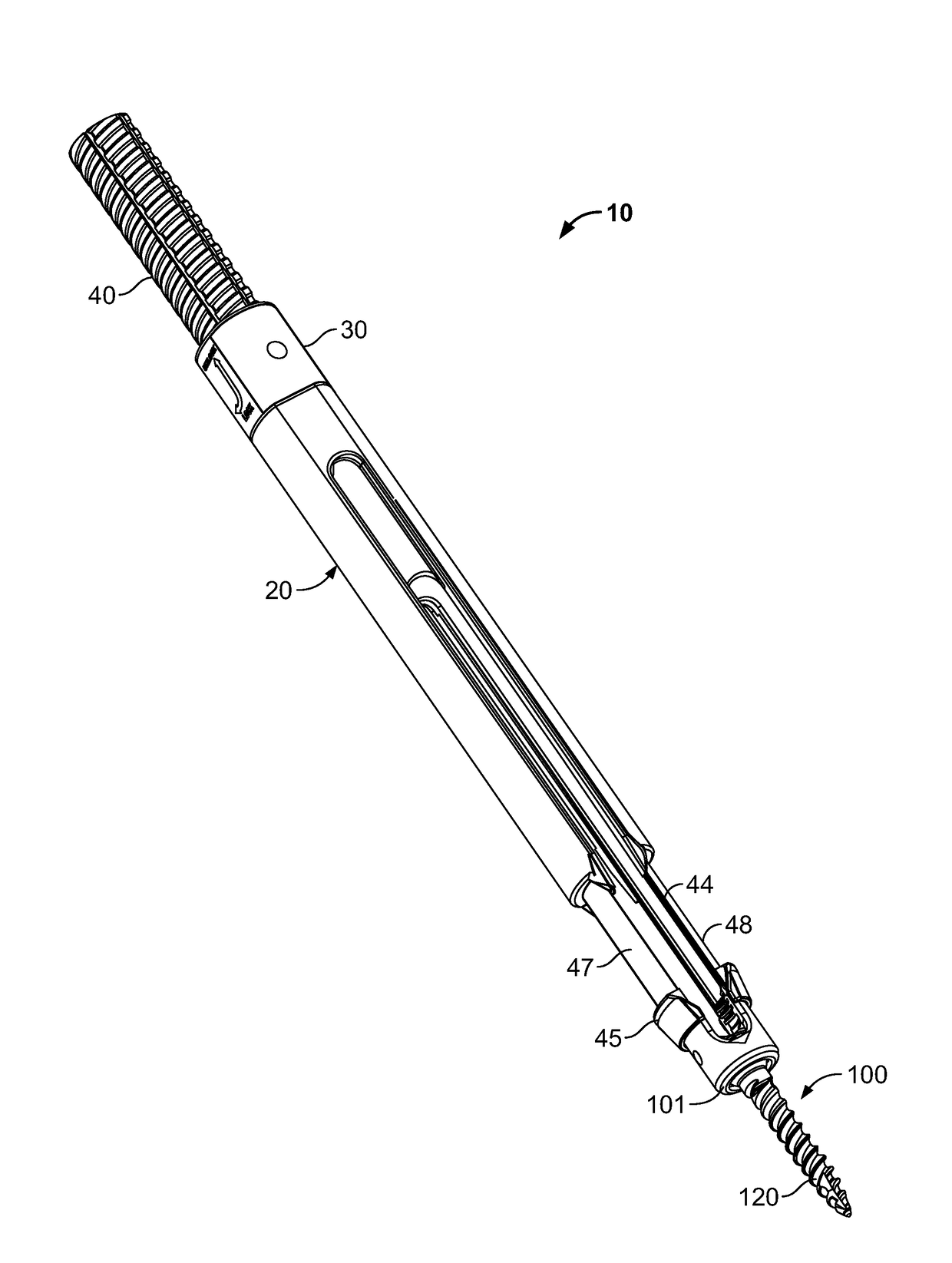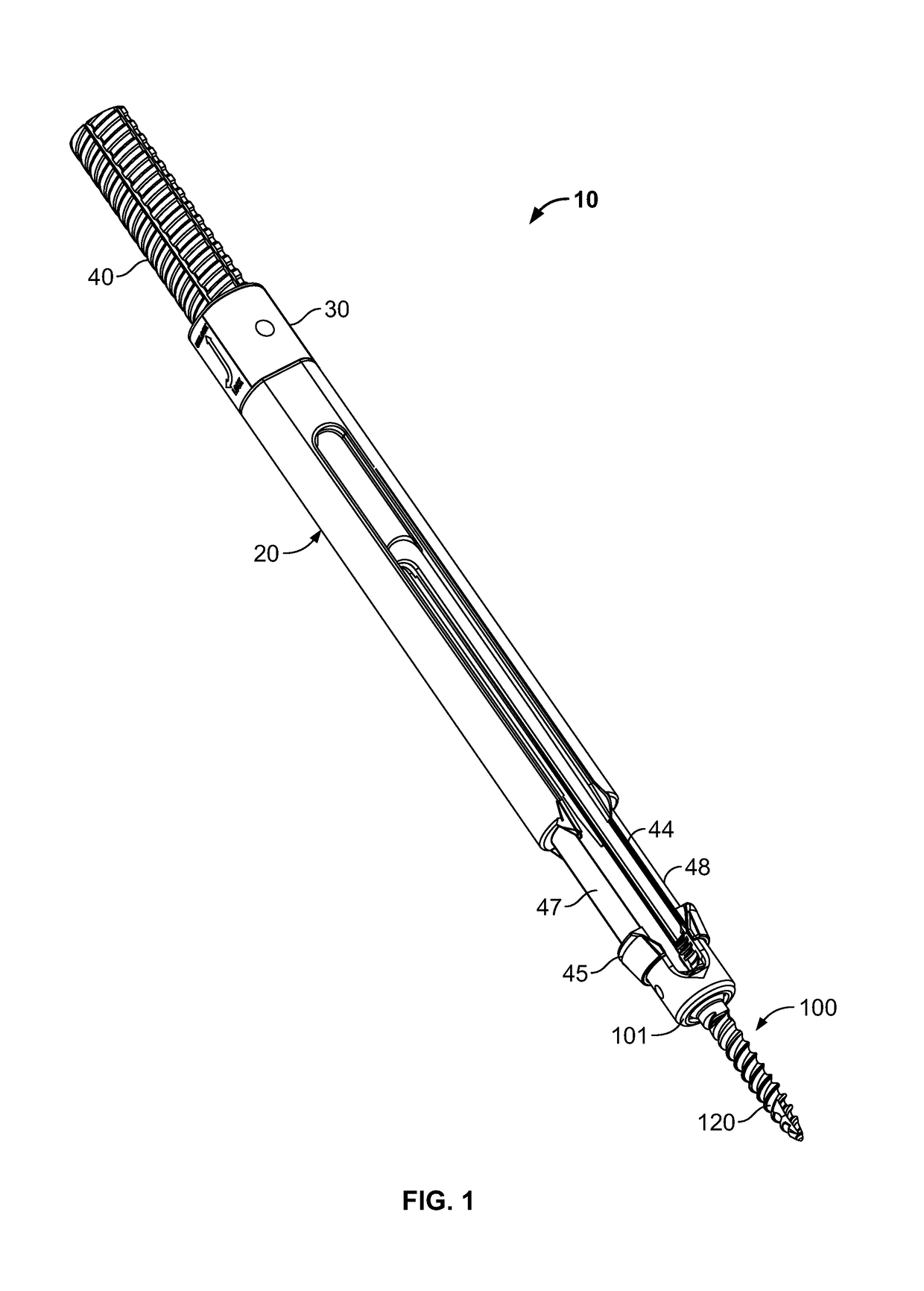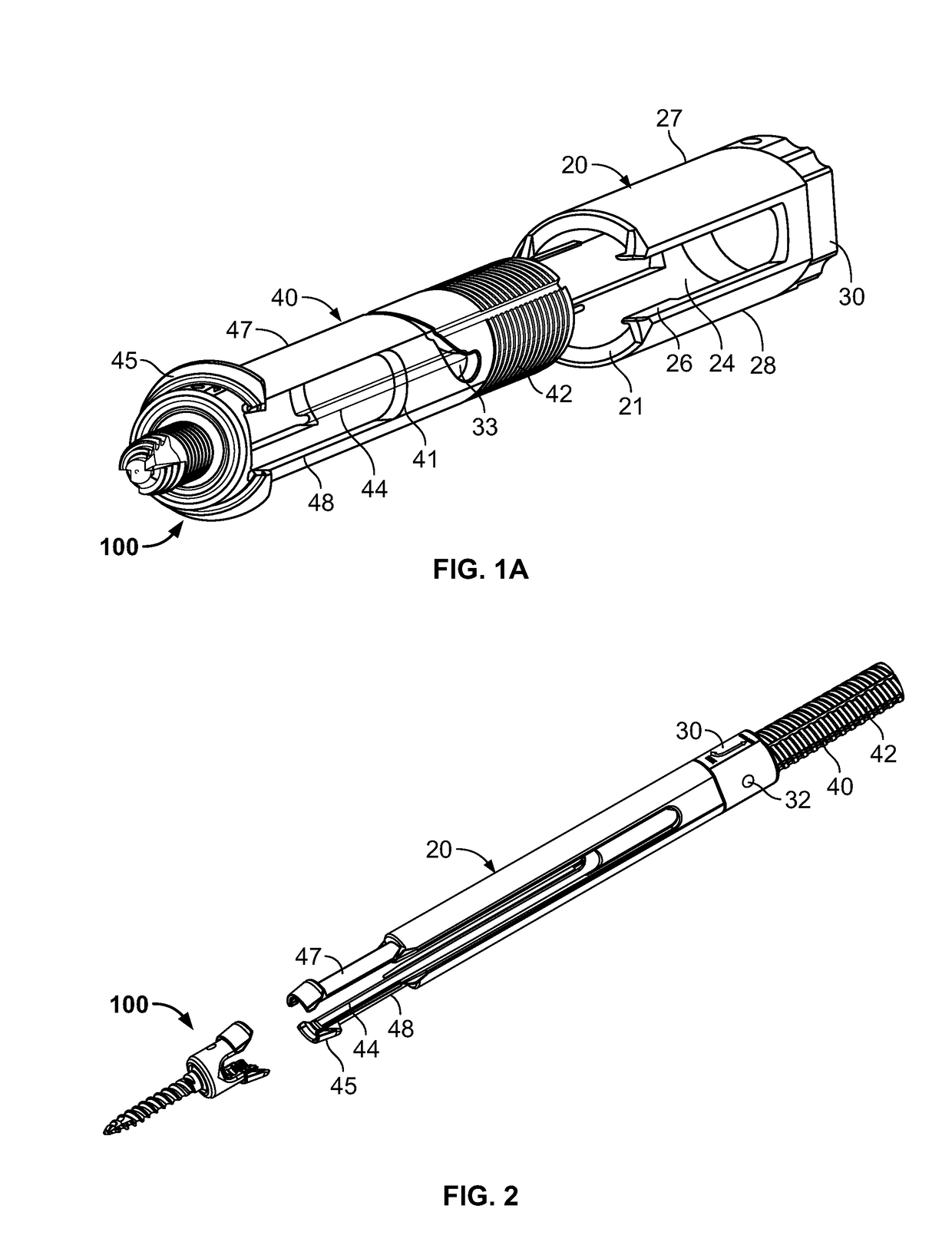Minimally invasive screw extension assembly
a screw extension and minimally invasive technology, applied in the field of minimally invasive screw extension assembly, can solve the problems of surgeons aligning fixation rods, particularly difficult,
- Summary
- Abstract
- Description
- Claims
- Application Information
AI Technical Summary
Benefits of technology
Problems solved by technology
Method used
Image
Examples
Embodiment Construction
[0036]With reference to FIG. 1, a screw extension assembly 10 is illustrated. The screw extension assembly 10 has an outer shaft 20 and an inner shaft 40. As shown, at a distal end of the screw extension assembly 10 is a rod receiving implant 100. The rod receiving implant 100 has a rod holding element 101 and a bone or pedicle screw 120 extending from the base of the rod holding element 101. The rod holding element 101 is slotted and configured to receive a spinal rod. As shown in FIGS. 1 and 1A, the inner shaft 40 has slots 44 defining deflectable leg extensions 47, 48. The deflectable leg extensions 47, 48 have a distal end 45 configured to deflect and engage the rod holding element 101. The rod holding element 101 has a groove 109 configured to engage a projection 49 on the distal end 45 of the deflectable legs 47, 48, best shown in FIG. 3A.
[0037]With further reference to FIG. 1A, the outer shaft 20 has a proximal end with a rotatable locking knob 30 affixed thereto. The outer s...
PUM
 Login to View More
Login to View More Abstract
Description
Claims
Application Information
 Login to View More
Login to View More - R&D
- Intellectual Property
- Life Sciences
- Materials
- Tech Scout
- Unparalleled Data Quality
- Higher Quality Content
- 60% Fewer Hallucinations
Browse by: Latest US Patents, China's latest patents, Technical Efficacy Thesaurus, Application Domain, Technology Topic, Popular Technical Reports.
© 2025 PatSnap. All rights reserved.Legal|Privacy policy|Modern Slavery Act Transparency Statement|Sitemap|About US| Contact US: help@patsnap.com



